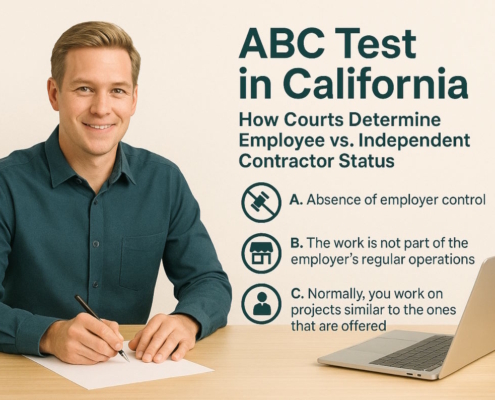What is a total rewards plan?
An efficient total rewards system may boost productivity, increase employee retention, and entice top talent. Read on to learn about Maslow’s hierarchy of needs and how it relates to total rewards strategies. We’ll also go over the components of these strategies and how you may use them in your own company.
An organization’s total rewards strategy is its concerted attempt to build a workforce that is both ambitious and committed to the company’s long-term success by providing a competitive and inclusive compensation plan. Everything that an employer provides its employees with, including benefits, perks, incentives, rules, procedures, and programs, is part of this package.
An efficient total rewards plan, in a nutshell, helps companies get what they want out of their employees by creating a more invested and fulfilled workforce.
Applying a total rewards strategy is usually the responsibility of the HR department or a specialized compensation and benefits team.
Priorities according to Maslow
According to Maslow’s hierarchy of needs, a good total rewards plan takes care of all the demands. According to this theory, there are five basic requirements that drive human behavior.
American psychologist Abraham Maslow proposed a hierarchy of needs to explain what drives people. How these demands develop or interact is open to several interpretations in this paradigm. But for the sake of this piece, let’s pretend that these are all necessities that, if realized, would allow the vast majority of individuals to thrive in their personal lives, friendship circles, and professional careers. Naturally, various relational circumstances will exhibit and fulfill these requirements in different ways.
In what ways do the various tiers of total rewards cater to the many requirements outlined by Maslow’s hierarchy? Let us take a look.
The 5 parts of total rewards
The term “compensation” describes the monetary and non-monetary benefits that workers receive from their employers in return for the knowledge, experience, abilities, time, and energy they put into fulfilling the company’s purpose and accomplishing its goals. With the money they earn, workers are able to take care of basic necessities like food, clothing, and housing. Base salary, variable salary, stock options, and cash bonuses are all part of this category of compensation.
The term “benefits” refers to a variety of packages offered to workers with the goal of improving their material, mental, and familial well-being. Health, dental, and vision insurance, paid time off, life and disability insurance, and retirement plans are the most fundamental forms of employee benefits.
Ensuring the well-being of employees has grown in importance as a means for firms to draw in and hold on to talented workers. In order to be happy, healthy, and motivated, more and more people are realizing that holistic wellness is essential. Therefore, workers are counting on company cultures to look out for their health and happiness. Characteristics of company cultures that prioritize and support employees’ well-being include:
- Employee assistance programs (EAPs) offer supplementary resources to workers who are dealing with personal issues, money problems, or mental health issues.
- Employee resource groups (ERGs) allow workers with common interests or experiences to meet one another and build professional and personal networks inside the company.
- Diversity, Equity, Inclusion & Belonging (DEIB) programs have proliferated in recent years as a means for numerous companies to assess and improve their level of inclusivity and equity for various employee populations.
- ‘Family Day’ and other company-sponsored events bring together a diverse group of employees for a fun day of socializing, where they can meet new people and strengthen ties to the company.
- Possibilities for employees to volunteer: The ability to help those less fortunate is a key component of a healthy work environment.
- The epidemic and the growing emphasis on family have raised the demand for telecommuting and other forms of flexible work scheduling. The stability of family life and relationships is another benefit of these kinds of arrangements.
- Public Acknowledgment: Not all workers are equally driven to give their all on the job, and others find that financial rewards, health insurance, and other perks aren’t enough to keep them going strong. Everyone wants their hard work and success acknowledged. Various forms of recognition programs include:
- Distinct honors, such as spot awards, tenure awards, and performance awards.
- A promotion is the opportunity to climb the corporate ladder, which opens doors to higher-level positions and more responsibility.
- A simple “thank you” or public display of admiration in front of their colleagues.
Even if not every worker requires public praise, everyone deserves dignity at work. Everyone deserves to feel respected so they may keep their dignity and mental safety on the job.
When companies put money into staff development programs, they’re really helping their workers reach their full potential. To varying degrees, every one of us possesses unique abilities. These strengths can help workers excel in their jobs through formal schooling, informal learning opportunities including mentorship programs, and on-the-job training. Put another way, these programs help workers improve in their careers, which in turn allows them to reach their maximum potential.
What is the point of having a total rewards plan in your business?
There are clear reasons for strong total rewards strategies. Here are a few things to think about:
Attracting top talent: A lot of people will be interested in working for you if you offer a total rewards plan that might cover all their needs. Because of this, a company is able to speed up the hiring process and appeal to a more broad pool of candidates.
Engaged and satisfied employees: A good total rewards program can help employees meet their needs as they grow and move from one stage of life to the next, which can lead to high levels of employee happiness. Fair compensation is another factor that keeps workers invested.
Employee retention: A good total rewards plan improves the health, engagement, and motivation of employees, all of which are important for keeping employees.
Competitiveness: A total rewards plan encourages employees to do their best work, which makes you more competitive in your field. As we’ve already established, the company has the potential to become the go-to place for talent in their field.
Better business performance: If your company can find and keep skilled workers, it’s more likely to meet its goals and do better than its competitors. To rephrase, successful businesses are usually the product of engaged, high-performing workers.
What is the process for developing a total rewards plan?
- Take stock of your current setup
It is highly unlikely that you will be beginning with a blank slate when developing your total rewards approach. A rewards audit can tell you exactly where you are right now. What kind of compensation package do you currently have? Which pay philosophy do you follow? Is your progress with the other parts of total rewards satisfactory? Some parts could be stronger than others.
You can use the results of this assessment to guide your priorities and areas of attention.
- Ask workers for their opinions
How do your workers feel about the incentives you offer now, and what do they feel is lacking? To find out, you might conduct a poll or set up a focus group with your employees. You can also get information about total rewards from stay- and exit interviews.
- Involve the top brass
Report audit findings and staff comments to upper management. Justify the importance of a solid total rewards approach by outlining the possible drawbacks, such as an inability to recruit and retain top talent. Not only do you need their support for your rewards budget, but you’ll also need their advice on organizational strategy and business objectives.
- Determine your objectives and top priorities
With your revised total rewards plan, what are your goals? In addition, how does this help you achieve your unique company objectives? In order to determine where to put your strategy-building efforts, ask yourself these and related questions.
As an example, you may have discovered that your company-wide issue with engagement is leading to higher employee turnover. Staff members quit because they don’t feel valued and their efforts go unappreciated. Then, you can make the recognition part of your total rewards plan stand out even more.
- Make sure your plan is in line with your culture and values.
It is important that your company’s complete rewards plan mirrors its culture and principles.
- Ensure that overall rewards are equitable, balanced, adaptable, and inclusive.
Including recognition heavily in your total rewards approach is a fantastic idea. But your workers also have bills to pay.
Make sure that all of your strategy’s components are well-balanced. Take a look at the customization possibilities for the awards as well. Some of your workers may be more interested in a lunch stipend than a paid gym membership.
Naturally, you should compensate your workers properly and equally.
- Stay current with what’s popular
Just because you’ve heard about a bunch of cool perks doesn’t mean you have to use them all. But, you should be aware that global, industry, and reward-related events do impact your compensation. Consider the impact of the pandemic on mental health, an area that is gaining increasing attention from employers.
- Tell workers about their total rewards
Employees may still require a refresher on your compensation and benefits package, even if they probably already know. Naturally, they should also be familiar with the other components of your company’s rewards program.
A clear and concise explanation of your whole rewards package is essential. The company’s internal wiki is a great place to collect FAQs and post answers, for instance. You can also set up frequent question and answer sessions so workers can ask anything they want to know about total rewards.
- Monitor the expenses and results
Make sure your total rewards plan has a healthy return on investment (ROI) in the long run. Document your expenditures and the results (such as an increase in eNPS) they produce. That way, you can keep your HR spending in check and make plan tweaks as needed.
In conclusion
Although time-consuming, developing a total rewards plan is money well spent.
To begin, think about your employees’ psychology through the lens of Maslow’s hierarchy of needs, which describes the universal drivers of human behavior. Your strategy’s structure and the complete rewards program’s components are tailored to meet these requirements.
When businesses take the time to learn about their employees’ motivations, present total rewards status, strategic goals, and budget, they open themselves up to creative possibilities in developing or improving their total rewards plan.
The benefits of a total rewards plan include increased competitiveness and staff loyalty. Think about what’s best for the company and what the workers want. Achieving your organization’s goals requires striking the correct balance.































